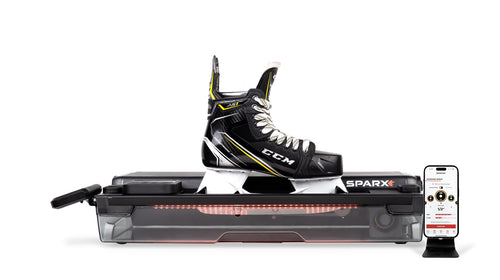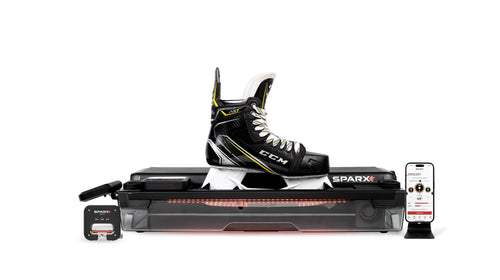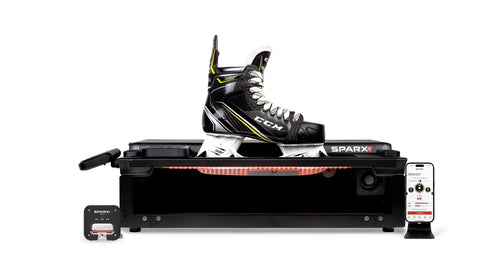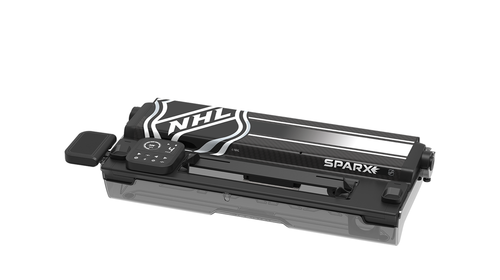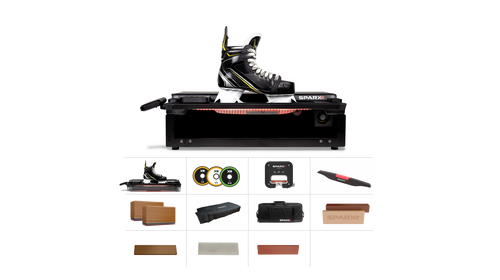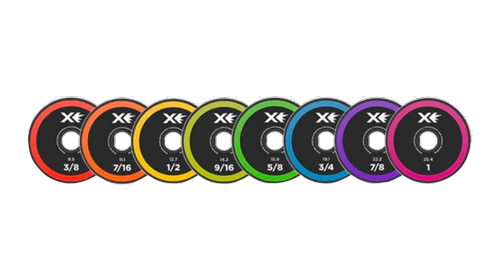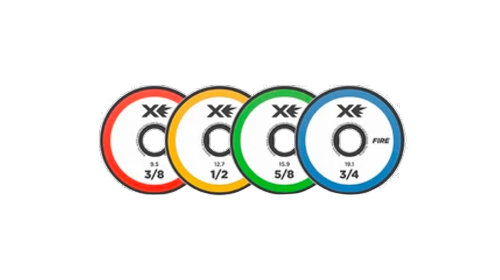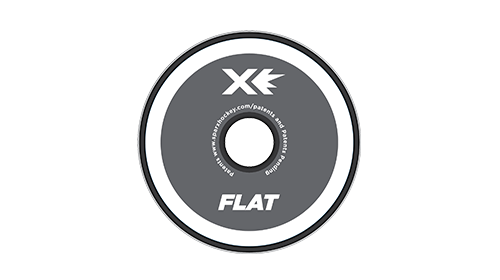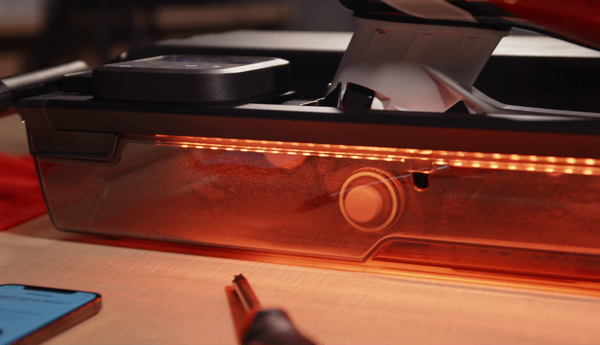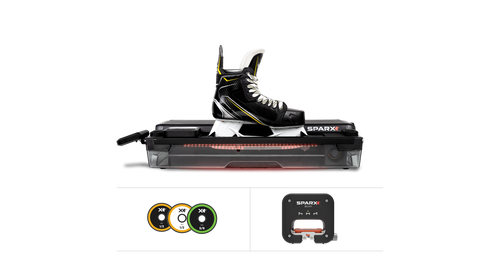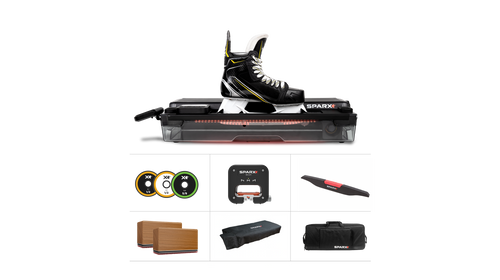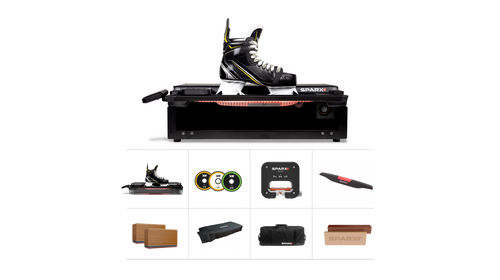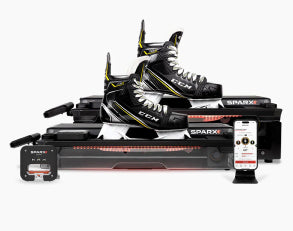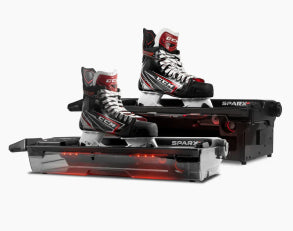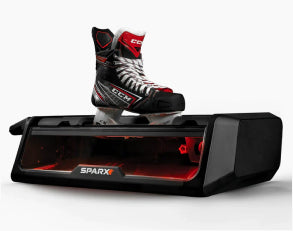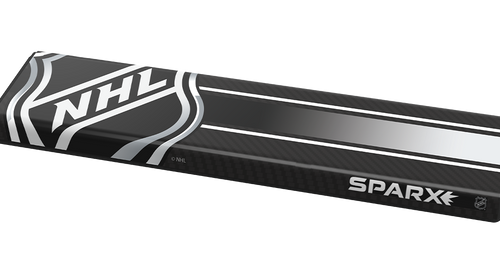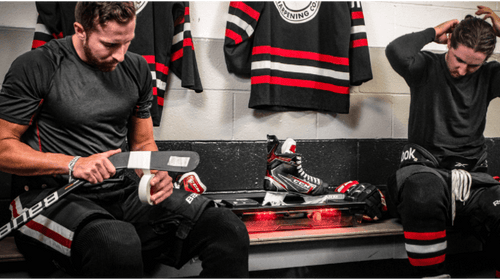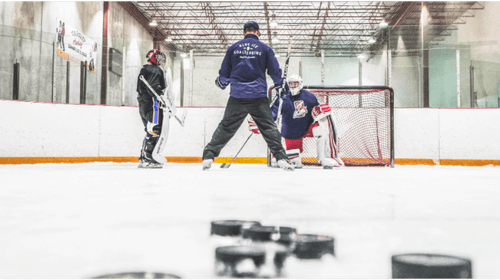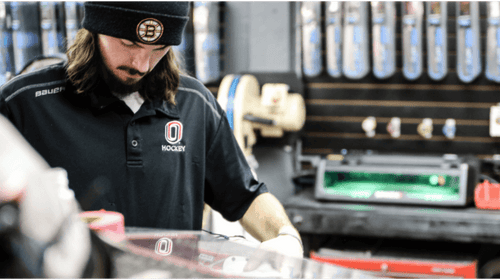Before we dive in on our first criteria of ESS, let’s introduce the concept of Radius of Hollow or RoH. Radius is the distance from the center of a circle to its outer edge (a measurement) and Hollow is a cut or depression in something. In our case, it’s the concave groove that is ground into the bottom of the skating surface. So when we say Radius of Hollow (RoH), we’re referring to the depth of the cut ground into the bottom of our blade.
We call the bottom surface of the hockey skate blade, the one that contacts the ice, the skating surface. The basic idea, at a high level, is the flatter this skating surface is, all other factors remaining equal, the faster the skate will glide on ice. A perfectly flat skating surface would therefore be ideal for maximum speed; unfortunately, in hockey and figure skating, the skaters also need to turn and stop. To make it possible to turn and stop, a concave profile (also called a radius of hollow or RoH) is ground into the length of the skating surface. This concave surface, or more specifically the edges of this surface, provide the skater with lateral (side to side) bite or grip in the ice that makes turning and stopping possible (or at least a lot easier).
Radius of Hollow and Performance
So, how does Radius of Hollow affect skating performance? Which RoH should you choose? Shown above is an example of the RoH getting numerically larger and the depression in the skate blade getting physically shallower as you go from left to right. The amount of bite or grip that a player feels in the ice is relative to the depth of the RoH. A deeper RoH on the left has greater grip in the ice than the shallow RoH on the right. There is a tradeoff however when choosing a deeper hollow. A deeper RoH will cause the skate blade edges to penetrate deeper into the ice resulting in greater gliding resistance. This means that a deeper cut feels slower to the player when skating in a straight line.
There are additional factors that dictate how an RoH behaves on the ice. Because the grip in the ice is related to how deeply the skate blade penetrates the ice, a player’s weight also plays a big role in selecting the correct RoH. We’re here to help make selecting the best RoH for you easier. Our hope is, as a result, we will also help you and your hockey players improve on-ice performance.
Choosing Your RoH
Over the years of sharpening we’ve found that the typical youth hockey players (less body weight) are comfortable with a 1/2” RoH and senior players (high school and up, generally heavier) are more comfortable with a 5/8” RoH.
Players should try these recommended RoH profiles first and then, based on their desire for experimenting with the speed/grip tradeoff, try an RoH that is either larger or smaller.
Deeper Hollow
Some players prefer greater bite (smaller RoH, or deeper hollow) in the ice because they feel it allows for:
-Harder and more aggressive turns
-Greater bite in the ice for acceleration
-Greater grip in the ice when, for example, battling for position in front of the net
-For goalies, a deeper profile is often desired to facilitate pushing off and moving quickly around the crease
Shallow Hollow
Other players prefer less bite (larger RoH) in the ice because they feel that a flatter profile:
-Retains sufficient edge to still stop and turn
-Provides greater forgiveness in the ice and the ability slide a bit laterally when making quick -changes in direction or drifting moves (e.g. lining up a one-timer)
-Results in less friction and thus more speed when gliding
-Causes less fatigue because there is less friction to overcome.
An interesting fact worth noting is that NHL players tend to, on average, skate on much flatter RoHs than your typical recreational player. One NHL team that we are close to claims that greater than 50% of the players are at 5/8” RoH and larger with many in the 3/4”, 7/8”, and 1” RoH range. This just goes to show that, on average, as players get heavier and more skilled they learn to use their edges more efficiently and sacrifice grip for improved glide. That said, there are still many beasts in the pro leagues skating on 3/8” RoHs because that radius feels better to them. We highly recommend experimenting with RoH to find the size that feels right to you – what feels right is right.

